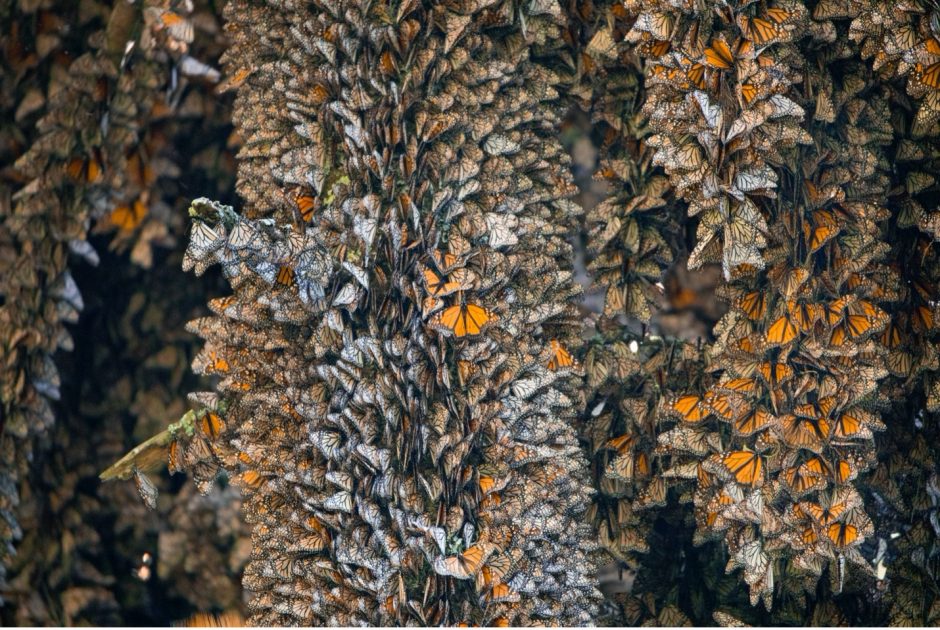
5 Ways to Photograph the Monarch Butterfly Migration
Photographing the magnificent migration of the monarch butterfly probably isn’t at the top of most nature and wildlife photographers’ top goals—but it ABSOLUTELY should be.
Not only is it one of the greatest spectacles of nature and wildlife on the planet, but it’s wildly photogenic. Plus, for most discerning nature and wildlife photographers, having photos that differentiate you as a photographer is key. Enter the monarch migration and all its potential to dazzle, enliven, and enthrall!
Although it might seem straightforward, getting show-stopping photos of the monarchs as they cluster in the trees and soar through the air isn’t as easy as you’d think. You’re often presented with top-down lighting, which creates noted shadows…flying butterflies require fast shutter speeds and a keen sense of angles and lighting…and so on.
But for every challenge there is a solution. Read on to get my take on nailing monarch butterfly photography, which has been one of my life projects for the past 20 years (and I even wrote a book on monarch migration photography!)
Use your telephoto more than you’d think
It’s easy to think small butterfly, plus close photography, plus big scenery equals wide angle lens nearly all the time. Not the case. Sure, you’ll get some great photos with your wide angle, but I’ve found over the years that your telephoto is actually your greatest asset. A 70-200mm or 100-400mm is my go-to.
One thing a telephoto allows you to do is to minimize shadows by zeroing in on only part of the scene in front of you. When a span of 50 feet left to right might have numerous zones of high light and dark shadows, a telephoto can allow you to find and photograph only the even patches of lighting—even lighting is key.

Notice above how many of the clusters are in either bright sun or shadows. While a wide angle shot is nice, and we’ll get to this technique in a bit, having a telephoto to zero in on individual patches is key.
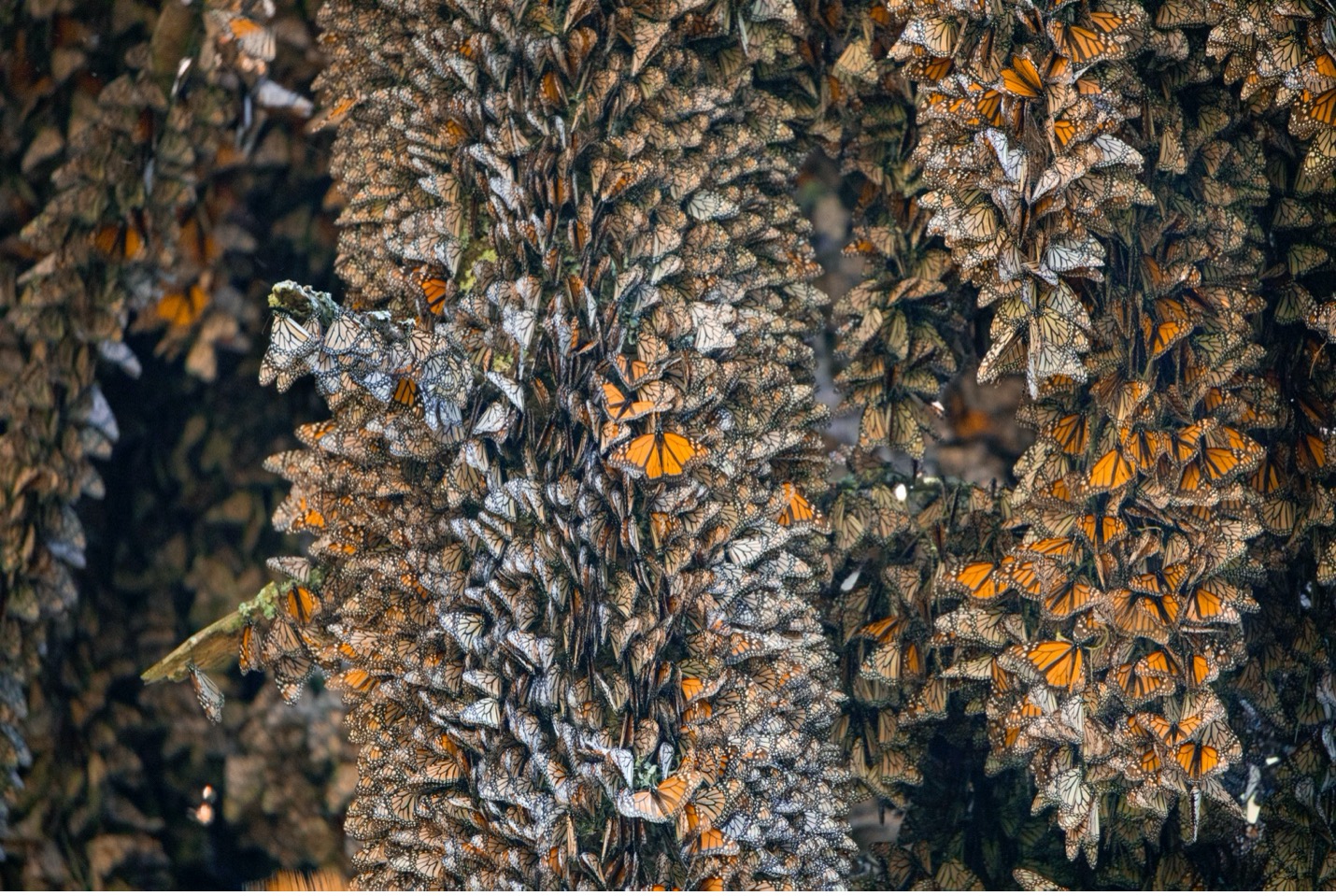
In the above photo, a telephoto allows me to look for relatively even lighting and minimize intense bright or shadowy parts of the colony.
The other thing a telephoto allows you to do is to fill the frame with the amazing colors and textures of the monarchs. I often advocate for edge-to-edge composition with the patterns of nature, and monarchs are a perfect example of this.
Look for “glowing” monarchs
No, this isn’t a new type of monarch species, nor one that spent too much time by a radioactive site. These are simply monarchs that are being backlit by sunlight in a way that allows a bit of light transmission through the brilliant orange wings.

Essentially you just need to train your eyes to expect to see this, like in the above photo. By paying attention to where the sun is located in relation to the colony, you are likely to stumble across this.
What I look for is when the sun is on the other side of some resting monarchs, such that the tree and butterflies are between me and the sun. That way, I’m more or less shooting into the sun. However, if you can angle yourself so that the sun isn’t in your photo (maybe look for a bit of blue sky to add a nice color like I have here), you don’t have sun flare or highlights in your scene.
Look for layering and choose your background
As you explore the monarch overwintering colonies, some clusters of monarchs will be closer and some further away. The trick here is to find a closer cluster and angle yourself (or choose the right cluster) that features a nice background.
In the below photo, I’ve deliberately chosen a branch filled with monarchs that is in front of a larger portion of the colony. This results in a nice layering effect.
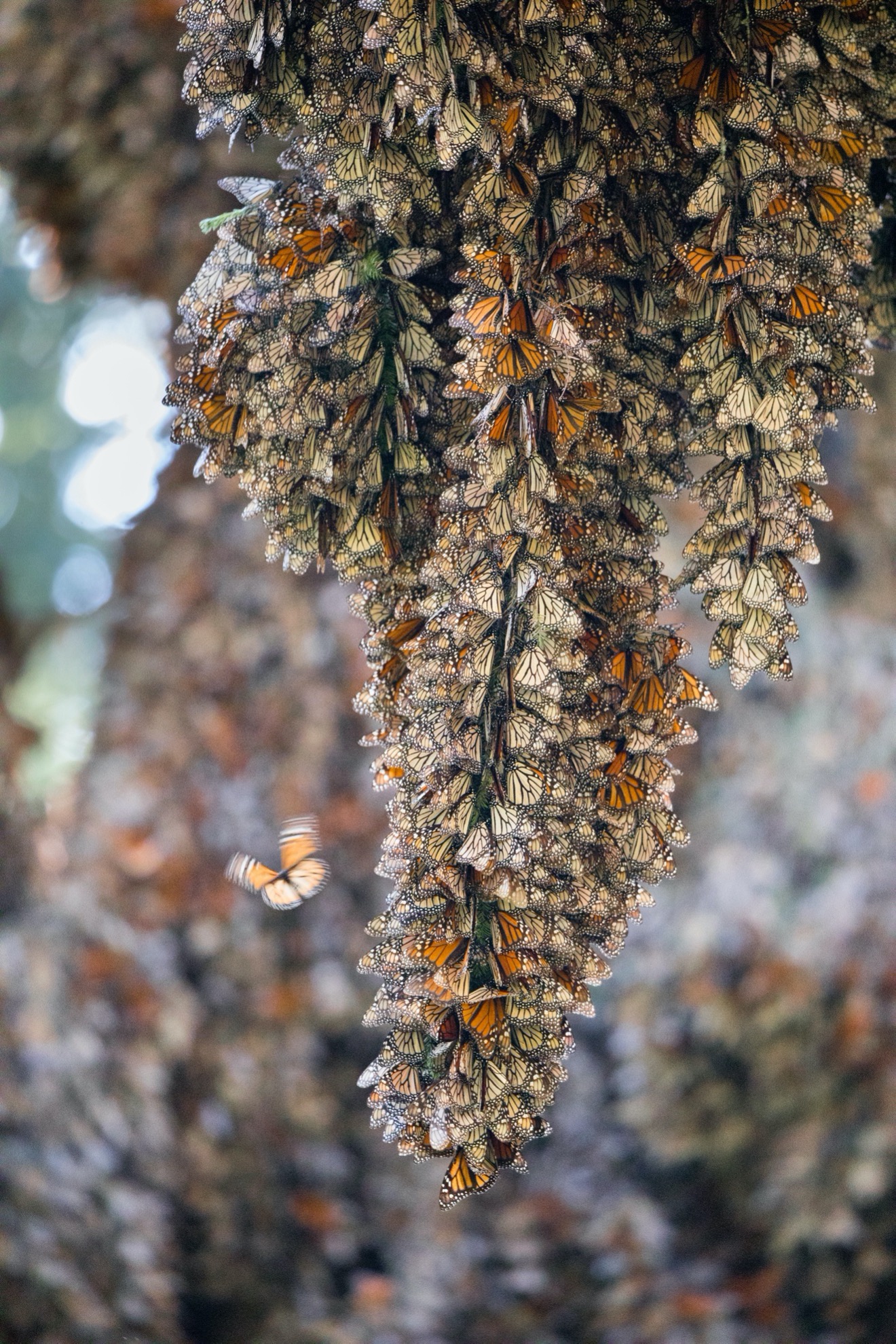
This won’t appear around each and every corner of the monarch biosphere reserves, but you are likely to see examples of this each and every day if you are out on a monarch migration adventure.

I have another example above, where the foreground is a tree trunk filled with monarchs, and the background is…you guessed it, more monarchs.
I also want to share this photo to illustrate the challenge of light and dark zones of the photos due to the oftentimes bright sun.
You can once again use your telephoto to seek an area that perhaps is all in the shadows, such that you can get an evenly lit section. There is no “right” way, necessarily…just different options.
Take some classic “macro” photos
I have an entire article dedicated to macro photography, as well as an additional article on how to take macro photographs without a macro lens, and I suggest you take a look.
However, for the below style of close-up photos of monarchs, the trick is to make sure you are photographing the flat surface of the monarch so that the wing of the monarch is parallel to the flat surface of your lens.
To put it another way, most of the monarch is equidistant from your camera, which maximizes depth of field.

Perching monarchs like the one above are ideal to photograph in this way. Because most of the monarch is at the same distance to my camera, I’m able to get a very deep depth of field on the monarch itself with only an f/5.6.
This is very helpful for point and shoot cameras that can only go to f/8, and also helpful for all other cameras due to the oftentimes dim forest understory.
Notice below how if you photograph anything but at that particular plane, only part of the butterfly is in focus now. By pivoting to the side, you can wait for its wings to fold behind its back, and then you can get the shot you’re looking for.

Using your ultra-wide angle
For full forest and full sky photos of monarchs flying, an ultra-wide angle lens (like a 10-22mm or 16-35mm) can be very helpful.
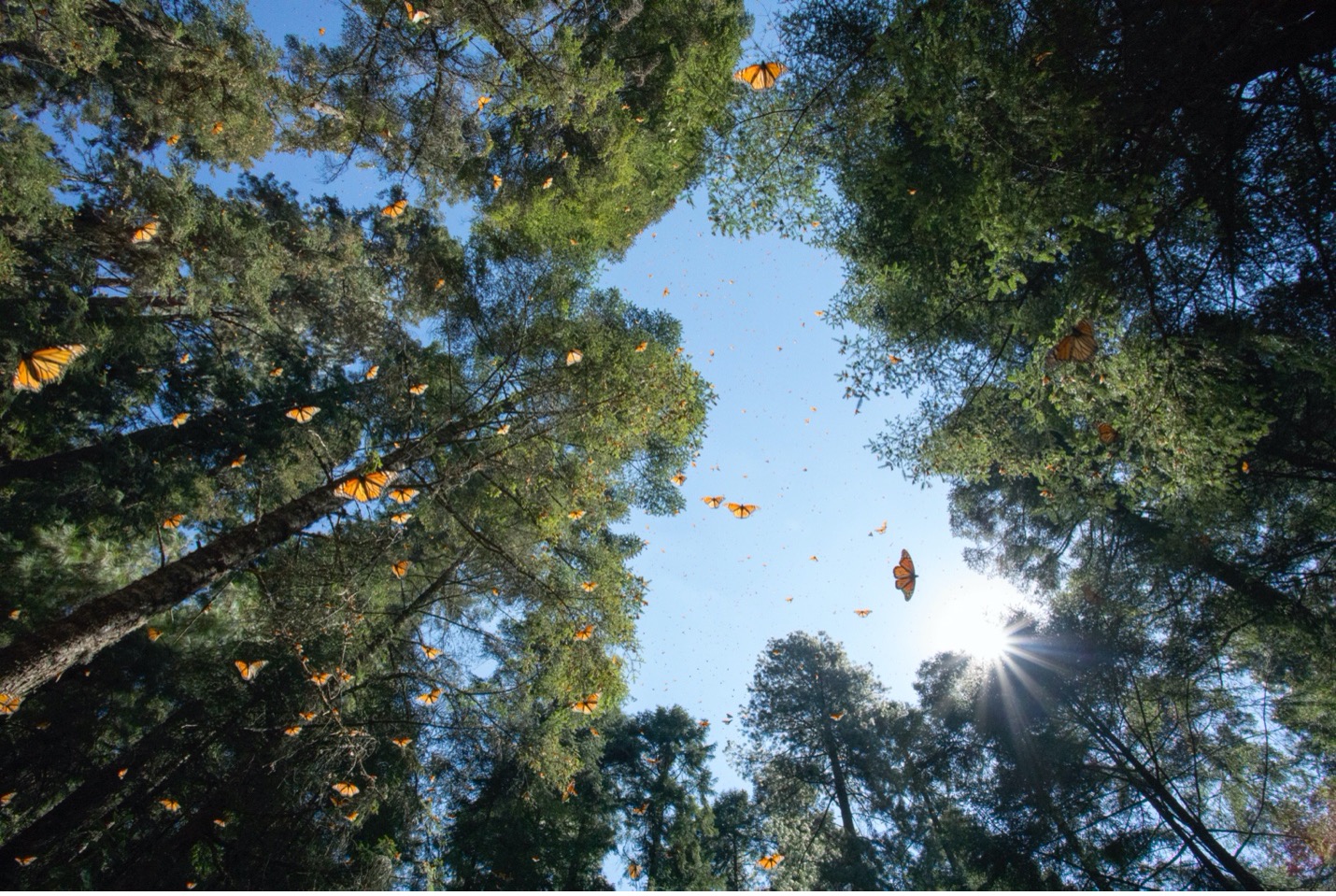
Because monarchs usually fly in such a way during sunny periods, you can affort to photograph at a very fast shutter speed. I typically recommend at least 1/1000th of a second, but you can usually get up to 1/2000th of a second pretty easily.
The trick to these shots is that it’s nearly impossible to auto-focus on a flying butterfly. Thus, I usually set my focus to manual and adjust the focus to approximately where I think the butterflies are flying…usually about 20 feet above my head.
If you also shoot at a wide depth of field, like f/8 or f/11 (again, very sunny, so your camera can handle it, usually), you have a larger slice of focus. Thus, aim your focus for the middle of where butterflies are flying and then just take 5, 10, or even 20 shots.
There is absolutely no way of knowing exactly where the butterflies will be, so you just need to take lots of photos and hope for the best when reviewing on your computer.
Bonus: Photograph “the other stuff” that goes on around the migration
There is an extraordinary culture that goes on with the monarch migration. Whether its tied in the Mexico’s Day of the Dead, murals around nearby towns, or simply photos of fellow travelers, if you’re headed on a specialized monarch photography tour, this is a big part of the rest of the story.
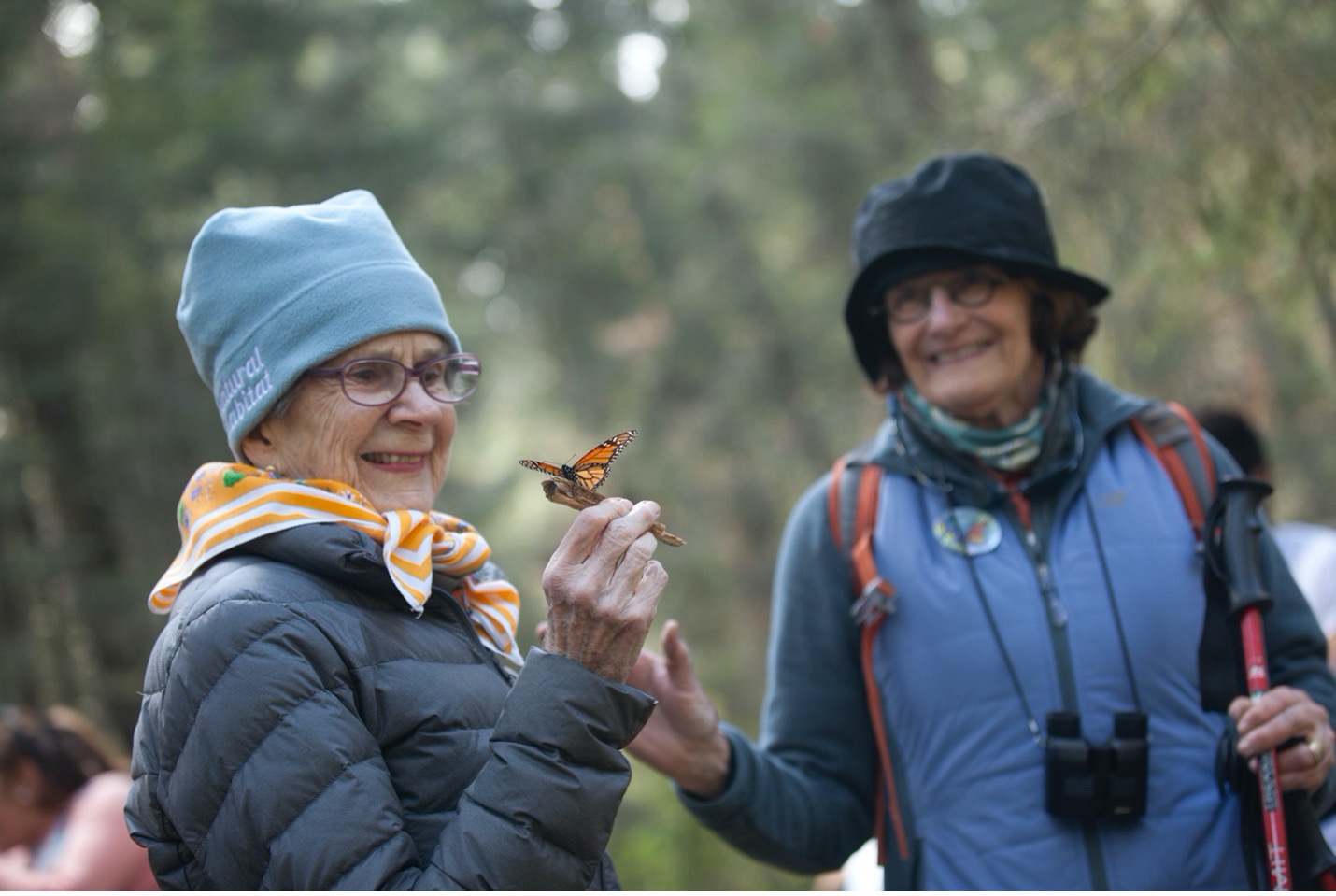
Think creatively about how you can capture the sense of wonder around the mysterious monarch migration.
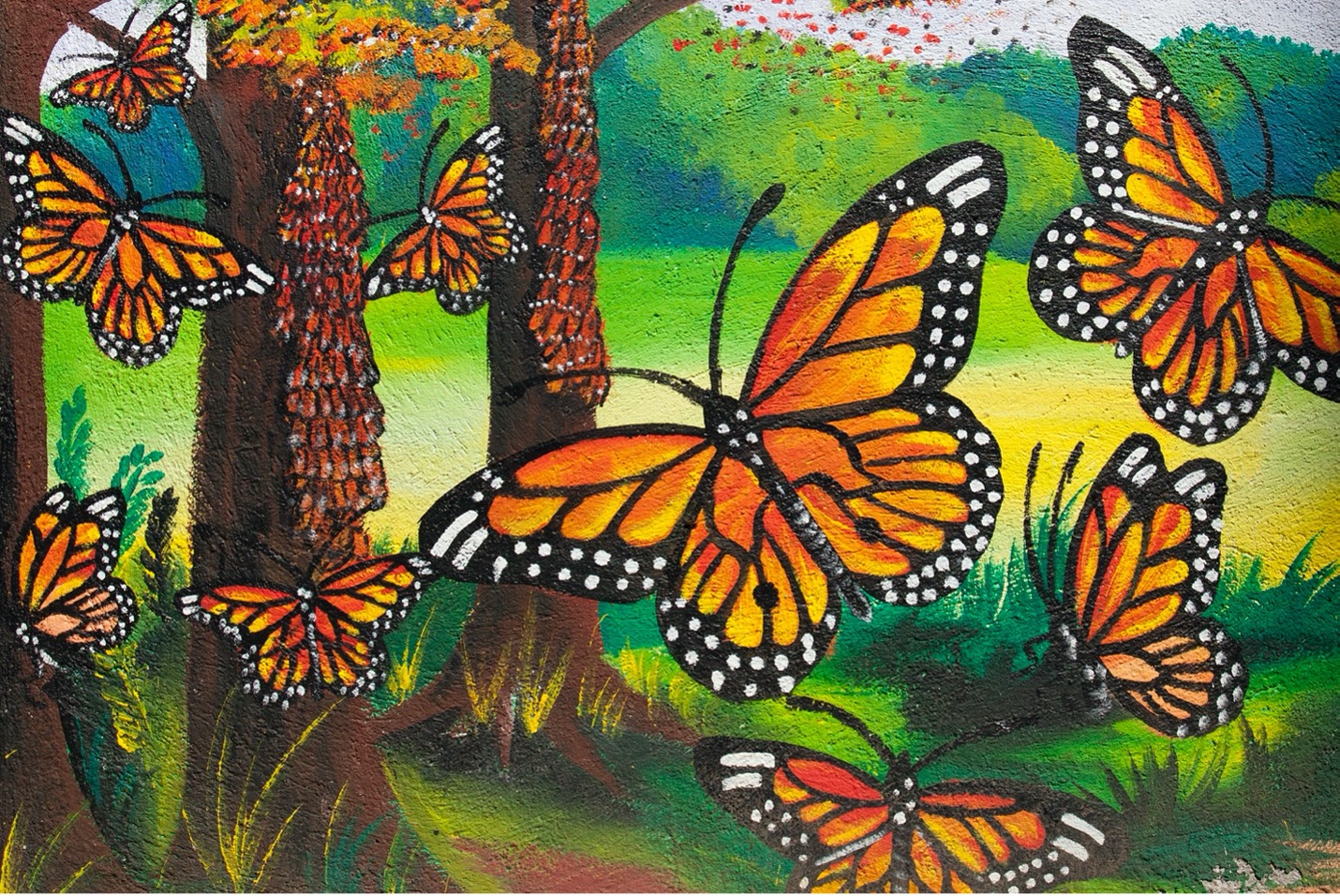
Look for scenes that show the general adoration the town of Angangueo has for this little insect.
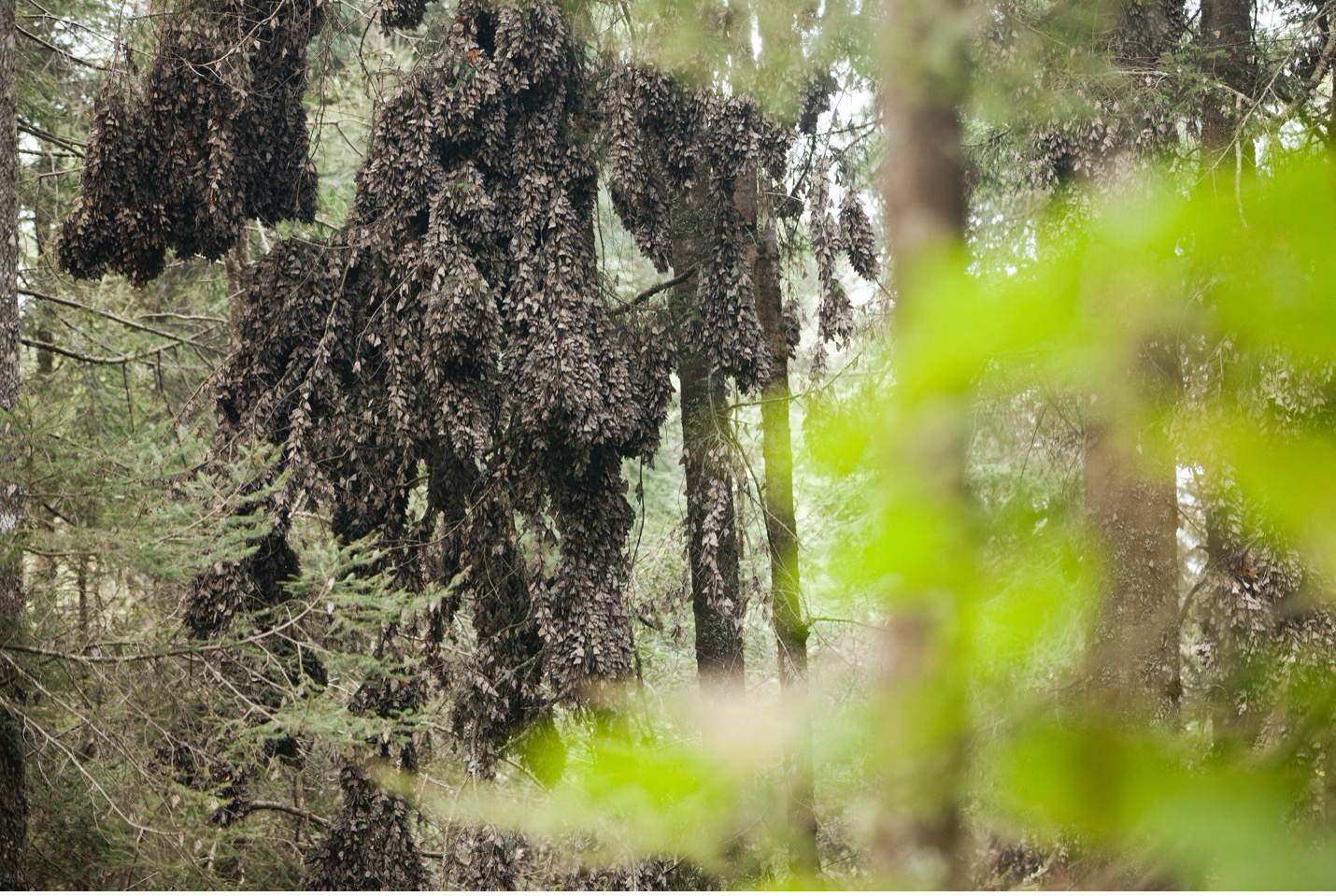
Use natural “frames” in the forest to create a sense of discovery like you’re peeking around the corner. I oftentimes will purposely put a tree branch or shrub in my way to create that sense of exploration and mystique.

The monarch butterfly migration must be on your list to photograph, as it’s one of the most impressive things I’ve personally seen in this wild world of ours. I hope it makes its way onto your list, if it’s not already, and I would love to photograph alongside you on one of the trips I routinely lead with Natural Habitat Adventures to see the migration.
Cheers!

Court
1 Comment

Msc
August 29, 2022 at 8:50 am
Thank you for sharing